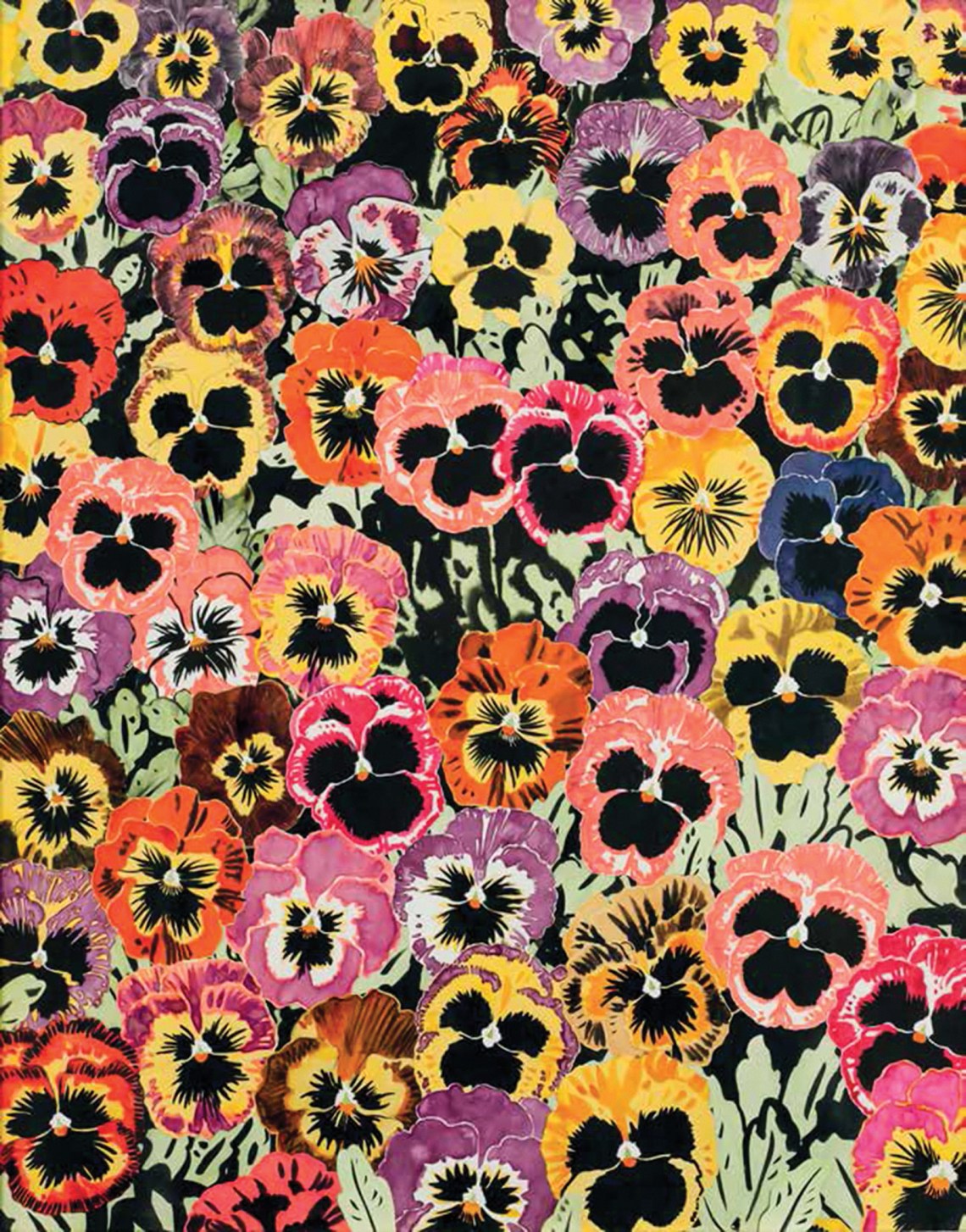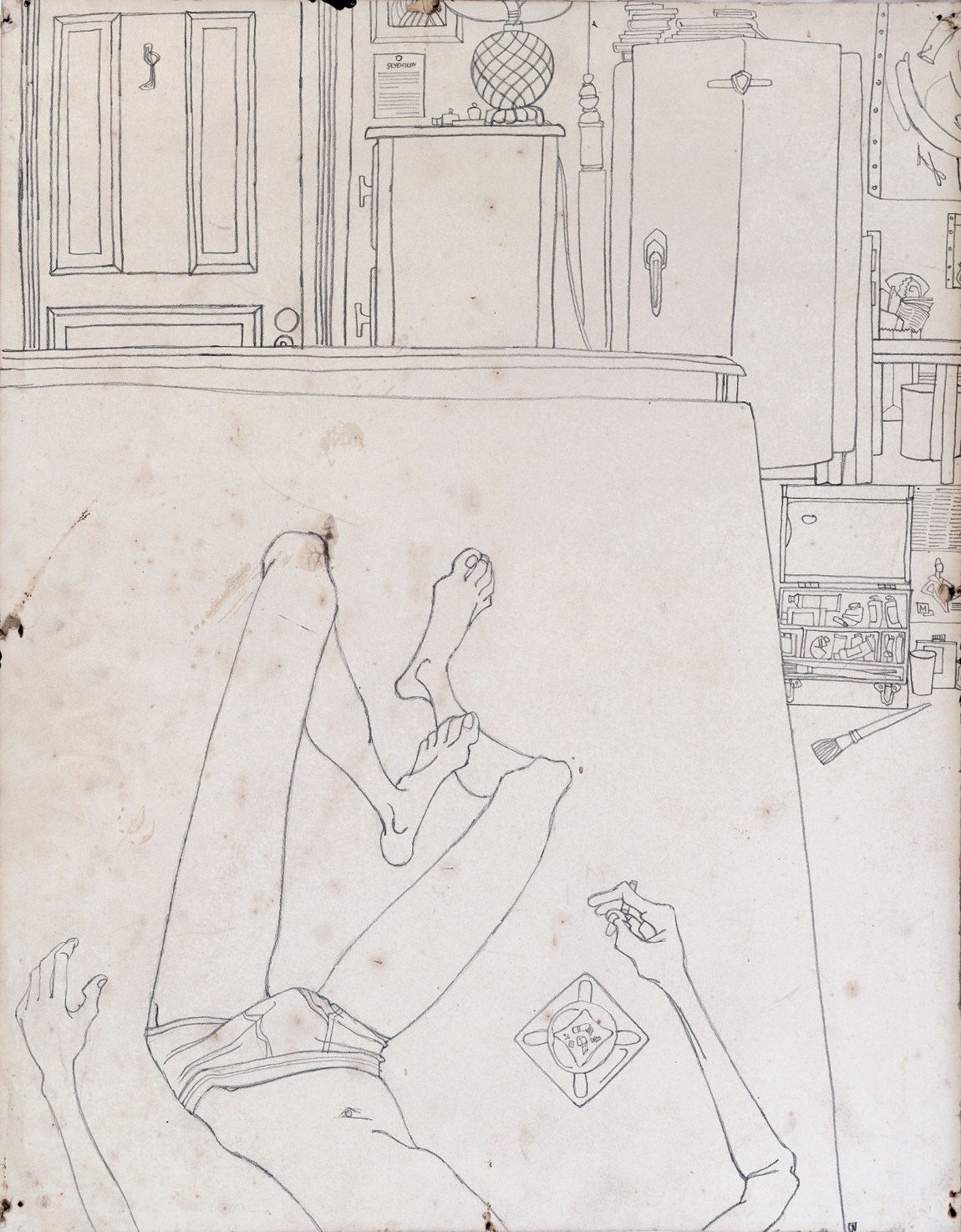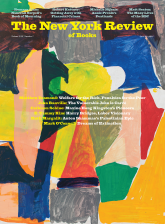I remember Joe Brainard. I never met him, and when I first felt his influence I had no idea who he was or where he came from, but the influence went deep. It came across stealthily and through scattered channels, apprehended in the corner of the eye, in cartoons that appeared in The East Village Other or back issues of his own C Comics (including an unforgettable and much-shared creation called “People of the World: Relax!”) or covers designed for the work of poets such as Ron Padgett and Anne Waldman or flyers for the St. Mark’s Poetry Project. It was the tail end of the Sixties and in the storefronts of the East Village there were a lot of competing fireworks and noise—calculated shock effects, exhortations apocalyptic or ecstatic, calls to smash the state or go back to the land, the beckonings of scores of nascent cults—but Brainard’s work, so devoid of bombast or proselytizing impulses, cut through the clatter.
I thought of him as a cartoonist with an unmistakable line, an illustrator who brought a distinctly different style to each book cover he designed, a humorist with a knack for making self-pity and self-importance laughable. Solemnity was foreign to him. His humor was without mockery or acerbic edge, a generous hilarity whose openness felt positively curative.
That impression became more decisive with the successive installments of I Remember (published between 1970 and 1973), which revealed him as the inventor of an altogether new sort of book. The work eventually became globally popular and a widely used text for writing workshops, but in that moment it was an unforeseeable anomaly. Those strings of sentences each beginning “I remember” served as an instant and almost innocent deflation of every sort of grandiosity, literary and otherwise. They imposed nothing on the reader; they simply laid out Brainard’s experience of being in the world and in his body in discrete flashes of perception, at once startling and hilarious and frank, and often most mysterious when contemplating the obvious: “I remember bean bag ashtrays that would stay level on irregular surfaces.” “I remember the wrinkles and creases of fabric being worn.” “I remember rocks you pick up outside that, once inside, you wonder why.”
It was like being admitted into someone’s head—into the recesses of a singular temperament—without any sense of barrier, with the candor of a close childhood friend. Much of I Remember was a collage of Brainard’s early life in Tulsa, Oklahoma, constructed from artifacts, daydreams, rumors, catchphrases, colors, sounds, flavors, a cascade of unspoken embarrassments and bewilderments, the folklore and shibboleths of growing up in the 1950s, pervaded by the glimmerings and anxieties of nascent queer identity:
I remember making sure that I held my cigarette in a not queer way. I remember one masculine-looking way to hold a cigarette I figured out was to hold it way down between my fingers. Below the knuckles.
But the more specific and personal I Remember becomes, the more it transforms into a book about everything. In dismantling himself Brainard lights up the microscopic impressions from which anyone’s world is built, so that to read the book is to write one’s own complementary text. As he wrote to Waldman during its composition:
I feel very much like God writing the Bible. I mean, I feel like I am not really writing it but that it is because of me that it is being written. I also feel that it is about everybody else as much as it is about me.1
When first reading I Remember, I had no conception of the full extent of Brainard’s work, the artistic production that the poet and critic John Yau explores, brilliantly and with contagious enthusiasm, in Joe Brainard: The Art of the Personal. The profuse reproductions in this volume suggest the staggering variety of a body of work encompassing “assemblage, collage, drawing, printmaking (including etching and silkscreen), painting, stage sets, costume design, posters, book and magazine covers, cartoons, cutouts, and writing.” But even so it would take many more such volumes to survey Brainard’s range. He created more than 3,500 artworks between 1965 and 1975, switching from one medium and mode to another, resisting the temptation to establish a more easily marketable artistic brand. He often made art with the humblest and most ephemeral found materials (cigarette butts or scraps of food packaging) and avoided working on a grand scale, remarking that he “didn’t enjoy looking at art that was bigger than it had to be.” Miniature images and objects delighted him.
The modesty with which he undermined the heroic stance itself had a heroic quality. Rather than promulgating a theoretically defined aesthetic program, he cultivated spontaneity: “I just work off the top of my head until one flower, or one line, or one gesture gives me a clue as to what I want to do…. My work never turns out like I think it is going to.”2 As he remarked in a 1977 interview with the poet Tim Dlugos, “I don’t have a commodity, and that’s the only way to make money. I change every year, and it’s very slow.” For Yau, Brainard is a major artist too often seen as minor or marginal—not by inadvertent neglect, but because his work and his approach to artmaking were from the start inimical to the contemporary art world’s ways of measuring artistic success, the valorizing of “celebrity and auction records” that Yau associates with “the rise of a new class of art collectors.” Brainard bucked that trend not only by creating small-scale work that didn’t flaunt its ambition but most flagrantly by his propensity for giving his work away to friends and lovers.
Advertisement
He had already written, in the remarkable “Self-Portrait on Christmas Night” he composed at age nineteen, “I no longer want success; I know once I have it it’ll be nothing. Nothing at all.” He had only been in New York for a year, and the success he was renouncing in advance was a remote prospect. Yet in another sense he was an artist with long experience behind him. He had shown skill at drawing since childhood and as a teenager received art prizes in competitions of all sorts, creating work for the Automobile Club of Oklahoma, the Tulsa County Public Health Association, the Methodist Youth Fellowship, and other organizations. A Tulsa newspaper wrote, “Joe Brainard has won so many awards in painting and poster work the last few of his fifteen years that even he loses track of them.” At that stage he envisioned a career as a fashion designer or illustrator, but his tastes were omnivorous: Aubrey Beardsley, Robert Motherwell, Henri Matisse, Piet Mondrian, Jasper Johns.
Yau describes Brainard in Tulsa as “a shy, socially awkward, stuttering, queer adolescent” who had the good fortune of a supportive and close-knit family and who was sustained from an early age by a strong artistic vocation. From various accounts (not least Brainard’s own), an impression emerges of someone who outwardly tended to display an acquiescent personality, who was reluctant to offend people or to put them ill at ease, yet who insisted quietly on making a space for the life he needed to live. He would invent his own place in the world, a bit to the side, shying away from center stage, making art out of his life, a life whose constant activity was artmaking. A full account of those early years and of all that followed can be found in Joe: A Memoir of Joe Brainard (2004), a masterpiece of biography by Padgett, his lifelong friend and frequent collaborator, who met him when they were growing up in Tulsa. It is an indispensable book for understanding Brainard’s work and the circumstances in which it was made; it is also social history of an intimate and very moving kind.
The galvanizing moment came in high school when Padgett invited Brainard to be art editor of White Dove Review, a magazine he was starting with his fellow poet Dick Gallup. Its five issues published work by Jack Kerouac, Allen Ginsberg, Robert Creeley, and other major writers, and the aesthetically adventurous community to which it introduced Brainard sharpened his artistic ambitions. On graduating he accepted a scholarship from the Dayton Art Institute, but after one term dropped out to join Padgett and other Tulsans—Padgett’s future wife, Pat Mitchell, and the somewhat older poet Ted Berrigan—who migrated to New York, forming the core of what John Ashbery would later call “the soi-disant Tulsa School of Poetry.” With few financial resources, Brainard scraped by in the kinds of accommodations that still abounded in the East Village, in one apartment alternately sharing the single bed with Berrigan (Brainard painting by day and sleeping by night, Berrigan occupying the bed by day), in another (for twenty-three dollars a month) living without electricity, making art alone or with Padgett, Berrigan, and eventually many other poets. He produced more art than the cramped quarters he lived in could hold—his workspace when he lived on East 9th Street was a windowless bedroom measuring eight feet by six.
Collaboration and collage—often the intermingling of images with words, whether others’ or his own—were fundamental to Brainard’s artmaking. The mixing of people, in which singularity of authorship or intent was blurred, was paralleled by a mixing of elements, an ongoing interest (as Yau puts it) in “gathering together and ordering contradictory things.” The East Village was then a trove of contradictory debris, and Brainard’s part-time work at a bric-a-brac shop on East 6th Street gave him ample access to artifacts to incorporate into his art, enumerated by Padgett as “crucifixes, costume jewelry, American flags, dolls, tintypes, antlers, etc.” His assemblages at times took the form of altars, not because they evoked any personal religious roots, but because “in Tulsa they have very few Catholics, and it was always very exotic to me, like some secret organization…. It was all over the streets in New York, and I got hooked on it.” The effect of these altars, or altar-like pieces—one of the best known features empty containers of Prell shampoo—is neither satirical nor campy. There is no hint of a large statement about religion or consumerism, only the sense of something strange, unexpected, and beautiful being put together.
Advertisement
Brainard had his first solo exhibition in New York in 1965 and showed regularly thereafter; he was part of an ever-wider community of painters and poets who loved and admired him. But after the exhibitions came depression, and his writings continued to attest to an unshakeable shyness: “If being shy is just a habit, it’s a hard habit to find a replacement for.” “My idea of how to leave a place gracefully is to ‘disappear.’” Characteristically the depressions were hinted at through humor and the shyness through candid revelation. By 1975 he had reached an apogee of visibility with an exhibition of 1,500 collages and drawings at the Fischbach Gallery—John Russell praised it as “the wittiest show of the winter,” and it earned him coverage in People magazine—but his message to People was that the art world had gotten “too big, too serious, too sacred, too self-important, and too expensive.”
He made a decision to stop showing in commercial galleries and made art at a more gradual pace than before. (He had given up the amphetamines to which he had become habituated; when he was on them he sometimes worked for days without stopping.) Always a voracious reader, he immersed himself in everyone from Tolstoy to Jane Bowles, a particular favorite being Barbara Pym. Reading Excellent Women (1952) with Brainard in mind, it is easy to imagine him identifying with Pym’s outwardly reserved, relentlessly observant protagonist, who shocks an associate by wondering aloud: “Did we really need a cup of tea?… I began to realize that my question had struck at something deep and fundamental. It was the kind of question that starts a landslide in the mind.” He tested positive for HIV in 1989 and died of pneumonia at fifty-two in 1994.
The lavish array of reproductions in Yau’s book provides a carefully selected overview of the many modes and genres of Brainard’s art, but they can only suggest its full effect. At a recent exhibition at the Tibor de Nagy Gallery in New York, each of the more than fifty items displayed—some tiny enough to be cradled in the palm of the hand—asserted its own domain, its particular process.3 There were boxes in which layers of delicately cut strips of hand-colored paper formed an intricate trompe l’oeil vegetation, and a hinged painter’s kit transformed with rows of cigarette butts (Tareytons, Joe’s brand) in orderly formation, each given a slightly different shape in being stubbed out, so that they start to resemble an array of elfin figures, under a partly obscured view of a sky full of clouds. On close examination these objects seemed to expand to fill a larger space.
A single small assemblage, for example, brought together commonplace debris—a piece of a milk carton, a bit of rusted metal from a can of Rheingold beer, a fragment of a broken bottle bearing the 7 Up logo, torn paper wrapping from a red Crayola crayon, paint chips, gridlike plastic parts from some miniature plaything, along with other materials too decayed or formless to identify—and made with them a frame around a stereotypically lovely child’s face, of indeterminate gender, weathered and stained, a remnant perhaps of the packaging of an antique jigsaw puzzle, peering through the surrounding detritus as through a window in a brightly colored ruin. Staring into this dense little world one could feel the presence of the artist selecting and arranging each component—things that would ordinarily be slated for rapid disposal rather than affectionate handling—and beyond that the city where he found them: a city miniaturized and then expanded again within the artwork. Things almost too trivial to notice were magnified and made remarkable.
The “art of the personal” to which Yau alludes implies the inseparability of the work from the person making it—from the tangible processes of drawing, painting, cutting, gluing—or for that matter from the person to whom it is being shown (and perhaps given, since many of Brainard’s works were specifically created as gifts). It encompasses as well everything incorporated into it—“the things that were part of his everyday life, which included stuff he used and things he saw in the neighborhoods where he lived.” The self-disclosure so fundamental to his art was already formulated in his “Self-Portrait on Christmas Night”—“Though I know beauty, I can’t express it until I have undressed. Have so much undressing to do…. I will undress, but never know why.”—but in disclosing himself he discloses what surrounds him. The writing is inextricable from the art, the art and writing together inextricable from the life, the life inextricable from other lives. Whatever he makes refuses to settle down into being an object separate and apart.
The “personal” here goes well beyond gossip (“It’s very personal”) or private symbolic underpinnings or the baring of emotion in a traumatized or confessional mode. With Brainard the personal has to do fundamentally with the fact of being a person, of having a body (“one’s person”)—to the point in fact of being impersonal. It may precisely be the seeming accessibility and instant readability of Brainard’s work in whatever medium that makes it finally so singular. As a writer, while his recurring subject is himself—he continues to probe his self-doubts and proclivities, always finding some new angle from which to contemplate the vagaries of his own thought process—he somehow keeps himself at a distance, an object of detached contemplation in a world of other objects, other bodies. His self-disclosure provides a relief from the burden of self.
Yau finds a point of entry into Brainard’s aesthetic in an early drawing, an aerial portrait of himself lying in his underwear on his bed at the Dayton Art Institute, smoking a cigarette, his legs drawn in exaggerated Schiele-like lines and extending toward the top of the picture, his head just outside the frame at the bottom, as if he were actually present where the drawing ends, looking down at what he is sketching. The contents of the room—lamp, refrigerator, table, wastepaper basket, two paintings, a paint box—are mapped with elegant precision, although from an impossible perspective: “He is both showing himself and looking at the nearby world.”
“No matter what he was working on,” Yau writes, “something of the pleasure he felt in the direct engagement with the materials entered into the art, and communicated itself to the viewer as well.” The remark is prompted by this particular untitled drawing, which Brainard apparently regarded so casually that he turned it around to use the other side as the base for a framed collage, but it applies to his work early and late. A shared pleasure is always implied.
For his many “garden” collages, such as Pansies (1968; see illustration at beginning of article), which from a slight distance appear to be continuously painted surfaces, he painted each flower individually and cut it out with painstaking precision, juxtaposing and overlaying them: a method, Yau notes, “closer to a project for an elementary school art class than an artist in a studio.” Yet the result is at once overwhelming and intimate, flickering between the ecstatic fusion of the whole (the centerless field of explosive color) and the individuality of each flower, which becomes more insistent the closer one looks. This art can never be purely decorative; it is always observing itself, commenting on itself, and imparting that to anyone who cares to look. It offers itself as something like a cure for solitude, with no entry requirements. That may account for the sense of gratitude that many feel for Joe Brainard’s work. As Yau neatly sums up, “You do not have to know how to look at it.”





